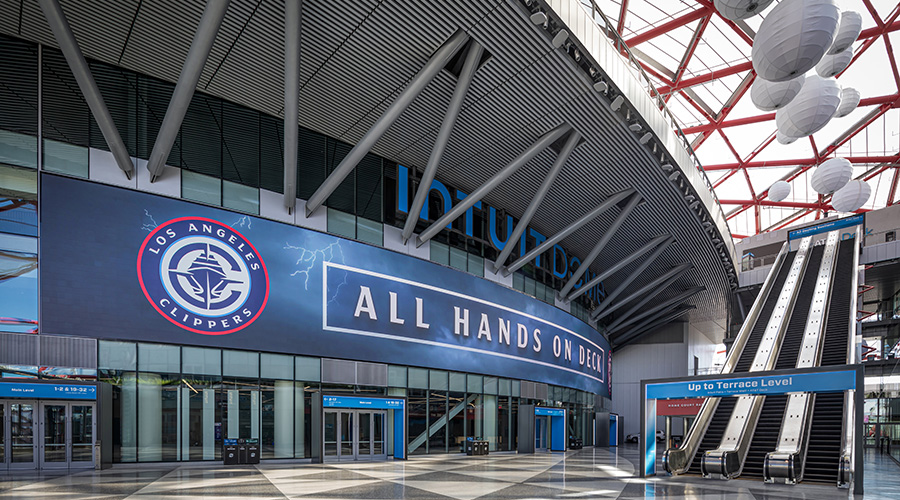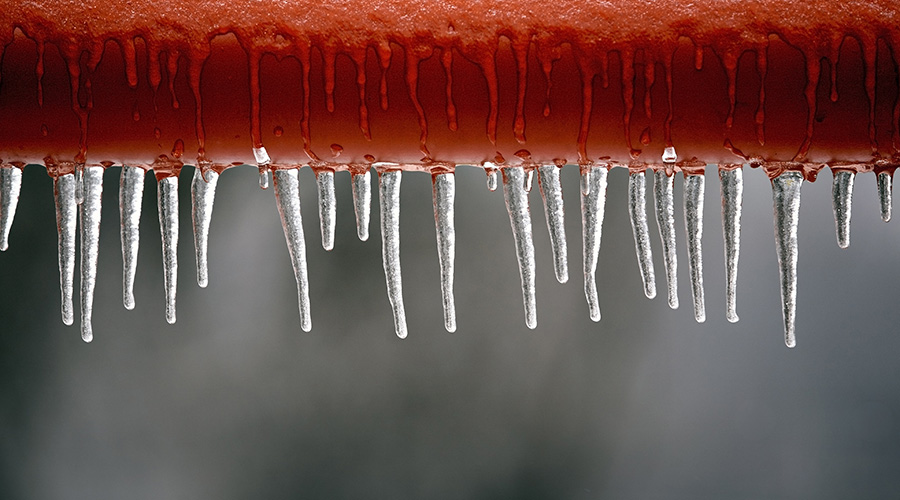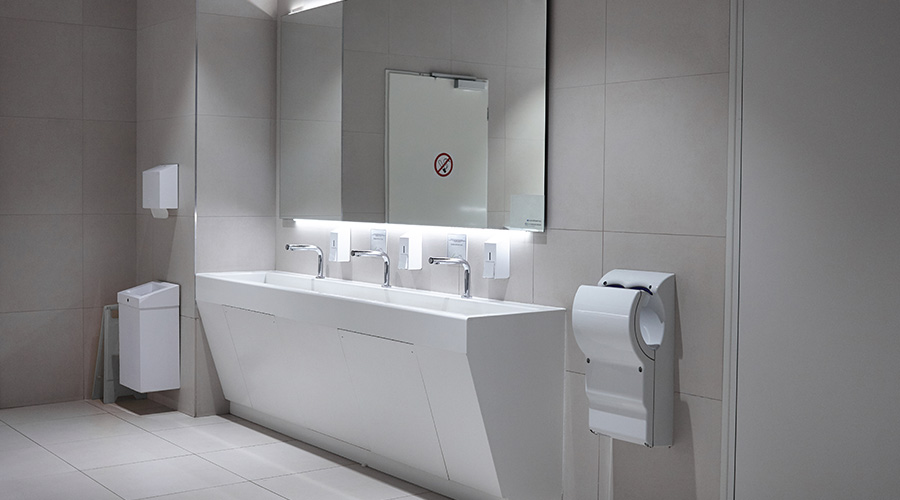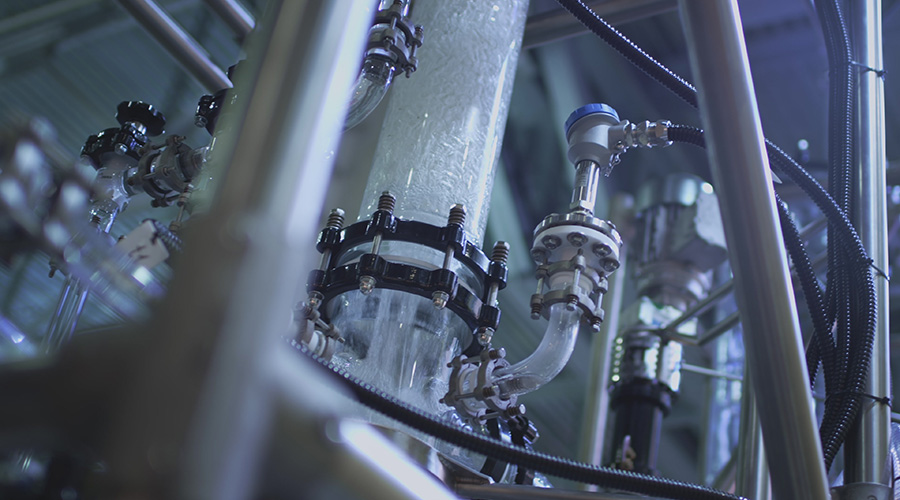Rough Waters Ahead
Facilities facing increasing water and sewer bills are turning to new and old ways to save water and money
Once taken for granted in most parts of the United States, water is now becoming a scarce and increasingly expensive resource. Pollution, overuse and drought are triggering water restrictions, not just in the arid Southwest and California but in as unlikely places as Seattle, Miami and Boston.
On top of that, a deteriorating and insufficient water and sewer infrastructure has public officials facing tens of billions of dollars in upgrades, making waste water, ironically, as expensive as clean water. Many experts think these costs will increasingly be passed onto commercial and institutional building owners.
As a result, there is growing interest in conserving, collecting and even recycling water, saving money as well as the resource.
A Drain on the Supply
The environmental and economic importance of protecting and conserving water has taken on a sense of urgency in the past few years. Weather-related droughts and dwindling supplies in the face of unchecked growth have made water scarce. In addition, it’s a resource for which there is no alternative or cost-effective way of making more. And it is being used faster than supplies can be replenished. This prospect is causing many parts of the country to take action.
While water problems are endemic to the Southwest, the lack of water is fast becoming a serious issue for many in the Northwest, Plains and East Coast. Even tropical Florida, seemingly steeped in water, is having serious difficulty obtaining sufficient fresh water supplies to meet growing demand. Colorado, Connecticut, Maryland, Virginia and New York are among a number of states that are facing changes in the way residents and businesses use water.
One problem is the source. Of all the water on earth, less than one-half of 1 percent is readily available for human use. Most water on earth is salt water and of the 3 percent that is fresh, more than three-quarters of it is locked up in the polar ice caps.
The other problem is the general disbelief that there could be a supply problem at all. Yet shortages are a reality that building owners may no longer be able to ignore, says Kevin James, deputy director of international programs with the Alliance to Save Energy (ASE). And in many ways the issue of water conservation should sound familiar to them.
“My sense is most building owners see water as a necessity and a fixed cost — they sort of accept the idea that it will be there and it will cost so much every year,” he says. “They don’t yet see the similarities to energy: that if we spend X amount more, we can be much more efficient down the road. Water is where energy was 10 to 15 years ago.”
Supply Down, Demand Up
The cost of water really is anything but fixed. While in some parts of the United States it is still relatively inexpensive, almost all areas are seeing costs increasing.
Water and sewer costs in many parts of the United States have increased dramatically during the 1990s. Most of the cost increases have been centered on metropolitan areas. Atlanta has seen a series of double-digit increases. In Washington, D.C., rates increased 42 percent in the late ’90s with the prospect of additional increases still fresh. In New York City, rates increased about 40 percent over the last four years. And in Boston, water and sewer rates have jumped 400 percent because of infrastructure improvement projects.
The actual costs vary. A seasonal rate — May through September — of $4 per 1,000 gallons was instituted in parts of North Carolina, up from an annual rate of just under $3. In Virginia, the combined water and sewer rate is about $10 per 1,000 gallons, but increases are almost inevitable. Seattle and parts of Oregon are also near or at double-digit rates.
Driving increased costs is not only the scarcity of water but also the weakness of the country’s water infrastructure. More than 14 percent of the nation’s water supply is lost through leaks somewhere in the system, according to the U.S. Environmental Protection Agency (EPA). And the American Water Works Association notes that replacing worn-out pipes, valves and other pieces of the nation’s water systems will cost $250 billion over the next 30 years. Experts at the Water Infrastructure Network say users will have to pay $23 billion more per year to ensure that the water and sewer infrastructure meets current standards — and this figure assumes buildings owners everywhere increase their water efficiency by 20 to 25 percent. And those cost estimates may be conservative.
“The building industry is starting to notice there is a huge near-term burden in replacing water and wastewater infrastructure,” says John Flowers, head of the EPA’s Water Alliances for Voluntary Efficiency (W.A.V.E.) program.
But not only will water and sewer treatment costs increase, Flowers says, so will water restrictions. Dozens of states and municipalities have put into place either temporary, seasonal or permanent water restrictions in the past two years. While most affect the residential market, the commercial market is increasingly a focus. For instance, Seattle’s new energy code bans the use of once-through cooling systems. Other areas have followed suit with restrictions on the design and operation of cooling towers. Some areas require a change over to low-flow fixtures.
And some areas that yet don’t have restrictions are getting close to having them. Washington, D.C., at present enjoys unrestricted use of water because its reservoir is at 65 percent capacity. If it dips to 60 percent, restrictions will be triggered.
With the pain comes some gain. New York City, for instance, has cut its water demand and is well positioned for continued slow growth. A leak detection strategy along with educational programs and some financial incentives have helped keep water demand under control despite a population increase during the 1990s, says Warren C. Liebold, director of technical services and conservation for the city’s Department of Environmental Protection. As a result, the growth of demand is expected to be slow or nonexistent for the next several years.
“Water efficiency will generally be used as an important resource whenever it is no more expensive than supply options,” Liebold says.
Incentive programs in New York and elsewhere have been instrumental and have proliferated. A number of municipalities offer rebates on the installation of low-flow fixtures and water audits. Some provide partial payment toward the purchase and installation of water meters. The City of Austin offers up to $40,000 in rebates toward the cost of installing new equipment and implementing processes that save water in existing facilities.
These incentive programs resemble demand-side management strategies utilities used in the early ’90s to curb energy use. Even the reasons for employing them are similar: Cities and utilities are recognizing the high cost of building new infrastructure.
“Municipalities estimate that incentives cost one-third of what it would cost to build new water treatment plants and the infrastructure that is needed to meet increasing demand,” James says. “And cities are just less likely to want to spend that kind of money on new capacity.”
It’s a financially necessary downsizing of systems, Flowers says. “You need less, you put in less so the system costs less.”
Seattle has proven that incentive programs work. Plagued with serious allocation and pollution issues for years, the city implemented an aggressive incentive program in 1994. For instance, the municipally owned utility will pay half the cost of a commercial water efficiency project if the project’s avoided costs to the city are more than the cost of the project, says Philip Paschke, program manager for Water Smart for Seattle Public Utilities. As a result, the city has avoided cumbersome and difficult-to-enforce restrictions. In fact, despite the growth Seattle has experienced, the city uses less water now than it did 20 years ago.
Water Plus Energy
There’s another, more positive reason for voluntary water efficiency measures. Saving water also saves energy. In fact, ASE has coined the phrase, “watergy efficiency” and is promoting a worldwide effort to encourage water efficiency and energy savings. While ASE is focusing on an international, largely third-world audience, the idea has a lot to offer building owners in this country, James says.
“As building owners, anytime you’re spending more for energy or water, you’re opening yourself up to risks in budget cost structures and price fluctuations,” he says. “Prices in these areas will be hard to predict so you want to minimize these risks.”
The watergy idea is simple. Almost everywhere water is used in a facility, it requires energy to move it, treat it, condition it and get rid of it. So the less water used, the less energy used.
Reasonable Paybacks
And examples of water-equals-energy aren’t hard to find. Columbia University in New York City cut its water and sewer costs by 20 percent and saved tens of thousands of dollars in related energy costs. This was done largely by replacing existing fixtures with low-flow types.
Dartmouth-Hitchcock Medial Center in Lebanon, N.H., with some fixture replacement and process and operation changes, posted $100,000 in annual water, sewer and energy savings. The payback on the project was three and half years.
And a medical equipment manufacturer in North Carolina saves $30,500 annually by replacing a once-through system with a chilled-water recycling system to cool a 20 horsepower pump.
Reducing water use by a significant amount is not that difficult. Flowers says most facilities can save 15 percent in water and sewer charges in addition to any related energy costs fairly easily. Paybacks are almost always reasonable — less than five years depending on the water and sewer rate. And it’s quite possible that a payback is two years or less, says Richard Pinkham with Rocky Mountain Institute. One commercial building in Brookline, Mass., replaced all faucets with aerators and saved $1,250 per year — a two-month payback.
New Solutions
Saving money and the environment are leading to new efficient technologies, says John Rattenbury, president of Rattenbury Engineering.
“It may have been seen as an investment, and with all the incentives, it does make economic sense,” he says. “But now owners are accepting and understanding the environmental reasons for using water and energy efficiently.”
The response to this has been more elaborate and efficient water systems designed into new and existing buildings. Systems that capture and reuse either rain water or so-called gray water from sinks and water fountains are proving to be cost effective.
The idea of on-site water filtration has been used by a number of green buildings for years, but as costs to dispose of water go up, more and more facilities are adapting this idea to even their non-green facilities.
Storing and reusing gray water is becoming particularly attractive because it doesn’t involve any traditional sewerage, meaning the water only has to be minimally treated. This gray water then can be used for non-potable uses, such as irrigation. The City of Austin has opened the code gates to allow building owners to install gray water systems, while the city itself works to reduce waste water and storm water flows.
Other buildings are recycling steam condensate to use in cooling tower operations while carefully monitoring water chemistry to reduce blowdowns and the amount of makeup water needed.
The latest advance, however, is actually related to a very old one — the rain barrel. Manufacturers are developing systems that capture and store water that falls onto a building’s roof. These so-called green-water systems have several advantages over the gray-water systems but can be easily designed to work in tandem.
“A lot of water that could be used lands on the roofs of buildings,” Rattenbury says. “This is free water, water that otherwise costs utilities — and so the owner — money to dispose of.”
It’s not only free water, but it is usually fairly soft water so minerals don’t have to be removed.
The rain is captured in a sophisticated cistern — a modern-day rain barrel — filtered by UV light or filters, and reused in some cooling applications, landscape irrigation or to flush toilets.
A new Massachusetts Institute of Technology building has a rain water collection system that added about $60,000 to the design and construction of the building, but it has less than a three-year payback.
There is also a side benefit to these green-water systems. Some designs can be so efficient in removing water that they are typically less expensive to install than a traditional roof drain system. Designs using “siphonic drainage,” Rattenbury says, draw water off the roof under a negative pressure. This allows there to be fewer drains and narrower down pipes.
Weather-related droughts have helped bring the issue of scarcity and the cost of water to the forefront. Continued growth in some areas has strained a once-abundant supply of water and sewer capacity, while growth in other areas has occurred despite the lack of supply. What this means for the years ahead, Flowers says, is a true accounting of water.
“We’re now starting to understand the true value of water,” he says. “Most people look at what they have now and consider water cheap, but if you look at the total cost of supplying and then treating it, there are hidden costs in energy and infrastructure that will be coming due soon — if they’re not already here.”
Related Topics:











